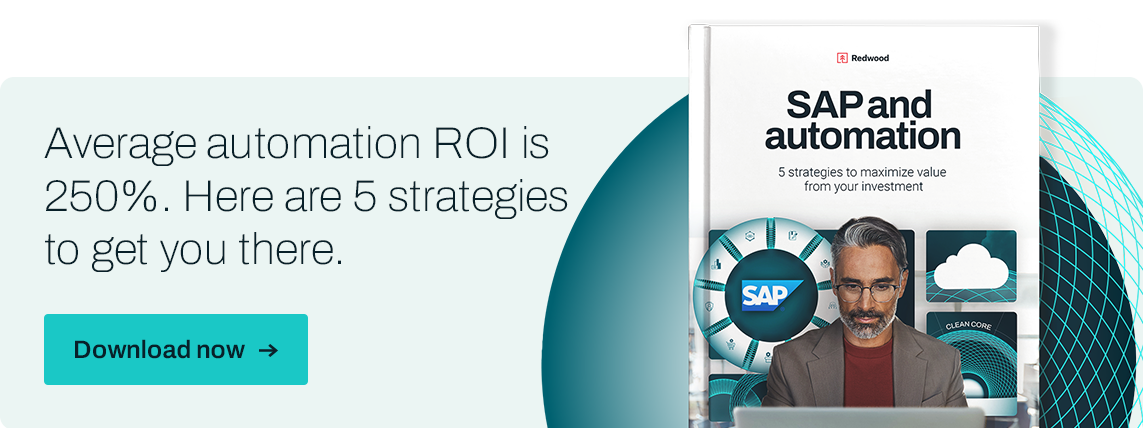What is SAP Cloud: Navigating the future of business technology

1. Definition of SAP Cloud
The SAP Cloud ecosystem offers unparalleled flexibility and power, encompassing a broad range of services from SAP HANA Cloud to SAP Business Technology Platform (SAP BTP). These solutions support real-time data analytics and application development and enable automation and artificial intelligence to enhance business processes and user experiences. Through SAP Cloud, organizations can access a suite of tools and platforms to drive digital transformation, ensure scalability and meet the dynamic needs of today’s business landscape.
Overview of the technology behind SAP Cloud
SAP Cloud harnesses an array of technologies to provide robust, scalable and flexible cloud solutions that cater to the varied needs of businesses across industries. At its foundation, SAP Cloud leverages the power of SAP HANA, an in-memory database that enables high-speed processing of vast amounts of data in real time. This technology backbone supports the SAP Business Technology Platform (SAP BTP), a comprehensive suite offering Platform-as-a-Service (PaaS), allowing businesses to develop, extend and integrate cloud applications efficiently and easily.
Integrating seamlessly with SAP’s cloud solutions, Redwood’s RunMyJobs offers a clear example of how advanced job scheduling and workload automation can enhance SAP environments. RunMyJobs is designed with a native API connection to SAP, including S/4HANA Cloud, demonstrating a deep dive into S/4HANA architecture and optimizing job scheduling processes. This integration ensures that businesses can leverage the full potential of SAP Cloud, enhancing operational efficiency and agility.
Explanation of cloud computing concepts relevant to SAP
Cloud computing within the SAP ecosystem is categorized into three main service models: Infrastructure-as-a-Service (IaaS), Platform-as-a-Service (PaaS) and Software-as-a-Service (SaaS). IaaS provides virtualized computing resources over the internet, offering a scalable and efficient infrastructure for running business applications. PaaS, exemplified by the SAP Cloud Platform, provides a development and deployment environment in the cloud, including development tools, database management and business analytics. SaaS delivers software applications over the internet, on a subscription basis, reducing the need for internal IT maintenance and support.
RunMyJobs by Redwood represents the pinnacle of SaaS innovation in the SAP ecosystem. It’s the only SaaS job scheduler built for the hybrid cloud, bringing unmatched performance and security. With lightweight agents that ensure effortless auto-updates in the cloud, RunMyJobs exemplifies how SaaS solutions can provide superior efficiency and scalability for SAP users.

Description of how businesses can deploy and use SAP Cloud services
Deploying SAP Cloud services enables businesses to adopt a more agile and efficient approach to their IT infrastructure and application needs. Companies can start by assessing their current IT landscape and identifying areas where cloud services can offer improvements, such as scalability, flexibility or cost savings. SAP Cloud Migration provides a pathway for businesses to move their existing SAP systems, including ECC and S/4HANA, to the cloud smoothly and efficiently.
RunMyJobs plays a crucial role in ensuring that businesses can deploy and use SAP Cloud services effectively. Its flexibility and future-proof design make it an ideal partner for SAP cloud migration, connecting across any SAP or non-SAP system, app or environment. Whether on-prem, in the cloud or hybrid setups, RunMyJobs enhances SAP environments’ scalability and ensures seamless transitions and operational continuity.
2. Key features and benefits of SAP Cloud
Detailed breakdown of SAP Cloud features
SAP Cloud is a comprehensive suite of services designed to support digital transformation and operational efficiency. Among its core features, the SAP Cloud Platform is a pivotal component, providing a foundation for application development, extensions and integrations within the cloud ecosystem. This platform supports various programming languages and frameworks, catering to developers’ needs for flexibility and innovation. Additionally, the SAP Cloud Platform enables the deployment of SAP and non-SAP solutions in a secure, scalable cloud environment.
The integration capabilities of SAP Cloud are also noteworthy. With SAP Cloud Integration, businesses can seamlessly connect their cloud and on-premise applications, facilitating smooth data and process integration across the enterprise. This is further enhanced by the SAP Cloud Connector, which acts as a secure link between on-premise networks and SAP Cloud services, ensuring data security and compliance. For analytics, SAP Cloud Analytics provides powerful tools for data processing and visualization, helping businesses gain insights from their data in real time.
Benefits of using SAP Cloud for businesses
Adopting SAP Cloud services brings a multitude of benefits to businesses, driving innovation and efficiency across processes. One of the most significant advantages is its agility and scalability, allowing companies to rapidly adapt to market changes and scale their IT resources according to demand. This flexibility is critical in today’s fast-paced business environment, where the ability to launch new applications or scale existing ones quickly can be a competitive edge.
SAP Cloud’s emphasis on integration and analytics enables businesses to enhance their decision-making processes. By leveraging real-time data analytics and seamless integration of applications, companies can achieve a more cohesive and intelligent enterprise, improving operational efficiency and customer experiences. The deep integration capabilities with SAP and non-SAP systems, facilitated by solutions like RunMyJobs from Redwood, ensure businesses can optimize their workflows and scheduling, enhancing overall productivity.
Additionally, moving to SAP Cloud can lead to significant cost savings. By transitioning from capital expenditure to operational expenditure models, businesses can reduce upfront investments in IT infrastructure instead of paying for only what they use. This can also decrease the complexity of IT management, freeing up resources to focus on innovation and strategic initiatives.
Comparison with traditional on-premises SAP solutions
Unlike traditional on-premises SAP solutions, SAP Cloud offers enhanced flexibility, scalability and cost-efficiency. On-premises solutions, while robust, often require significant upfront investment in infrastructure and ongoing maintenance, which can be costly and resource-intensive.
In contrast, SAP Cloud services are managed by SAP, reducing the burden on internal IT teams and allowing businesses to leverage the latest technological advancements without significant investments.
Furthermore, SAP Cloud provides access to the latest innovations in cloud computing, artificial intelligence and machine learning, seamlessly integrated into its services. This contrasts with on-premises solutions, where upgrades and new features may require additional investment and lead to downtime during implementation.
In conclusion, SAP Cloud represents a transformative opportunity for businesses to enhance their operational efficiency, agility and competitiveness in the digital era. Through solutions like SAP Cloud Migration and S/4HANA Integration offered by Redwood, businesses can seamlessly transition to the cloud, ensuring they are well-positioned to capitalize on the benefits of SAP’s powerful cloud ecosystem.
3. SAP Cloud services and solutions
Overview of services offered by SAP Cloud
SAP Cloud offers vast services designed to cater to different business needs and industry requirements, offering unparalleled flexibility and innovation. At the forefront is SAP S/4HANA Cloud, a next-generation ERP solution that brings the power of the HANA in-memory database to the cloud, enabling businesses to process and analyze large volumes of data in real time. This solution is pivotal for organizations looking to enhance their core business processes with improved efficiency and insight.
Another key service is SAP SuccessFactors, which revolutionizes human resource management by providing cloud-based solutions to manage various HR functions, including employee experience, payroll and talent management. Similarly, SAP Ariba offers a cloud-based procurement and supply chain collaboration platform that helps businesses manage their buying processes and engage with suppliers effectively. Each of these services embodies SAP’s commitment to delivering comprehensive cloud solutions that drive digital transformation and operational excellence.
For those looking into optimizing job scheduling in these sophisticated environments, a deep dive into S/4HANA architecture can reveal how integration and automation are critical components of modern ERP systems. Leveraging tools like Redwood’s solutions can significantly enhance the efficiency and reliability of these processes.
Use cases and case studies with real-world scenarios
The real-world applications of SAP Cloud services across various industries highlight their impact on driving innovation and operational efficiency. For instance, companies in the manufacturing sector have leveraged SAP S/4HANA Cloud to streamline their production processes, improve supply chain visibility and make data-driven decisions that enhance product quality and customer satisfaction. These businesses benefit from the real-time analytics and insights provided by SAP HANA, enabling them to anticipate market changes and adapt their strategies accordingly.
In human resources, organizations have transformed their HR operations with SAP SuccessFactors, improving employee engagement and performance management. This has helped attract and retain top talent and fostered a more productive and satisfying workplace culture.
SAP Ariba has been instrumental for companies looking to optimize their procurement processes. By automating procurement and supply chain operations, businesses have achieved more significant cost savings, efficiency and risk management, fostering stronger relationships with suppliers and ensuring compliance with global and local regulations.
These use cases underscore the versatility and effectiveness of SAP Cloud services in addressing specific business challenges and driving digital transformation. Companies embarking on their cloud journey, particularly those undergoing SAP Cloud Migration or seeking S/4HANA Integration, can glean insights from these success stories to navigate their transformation with confidence and strategic advantage.
In each scenario, the integration and automation capabilities offered by solutions like Redwood’s optimizing job scheduling and SAP Cloud Migration services play a crucial role in enhancing system efficiency and business outcomes. These case studies showcase the powerful capabilities of SAP Cloud services and demonstrate how businesses can leverage these technologies to achieve their strategic objectives and maintain a competitive edge in their respective industries.
4. Implementing SAP Cloud in your business
 Steps for businesses considering adopting SAP Cloud
Steps for businesses considering adopting SAP Cloud
For businesses contemplating the transition to SAP Cloud, the journey begins with a comprehensive assessment of their IT infrastructure and business processes. This initial step involves identifying areas where cloud services can introduce efficiencies, scalability and innovation. Following this, companies should explore the SAP Cloud portfolio to determine which solutions best align with their business objectives and requirements. Solutions like SAP S/4HANA Cloud for ERP, SAP SuccessFactors for human capital management and SAP Ariba for procurement provide targeted functionalities to address specific business needs.
Engaging with an experienced partner like Redwood, known for its deep integrations with SAP and its core products, can significantly smoothen the transition. With tools like RunMyJobs, businesses can leverage scalable and flexible cloud infrastructure, ensuring that their SAP Cloud implementation is efficient and tailored to their unique operational needs. This step is crucial for laying a solid foundation for the cloud journey, enabling seamless integration with various databases, file systems and applications.
Potential challenges and how to overcome them
Transitioning to SAP Cloud can present several challenges, including data security concerns, integration complexities and managing the change within the organization. To mitigate these issues, businesses should prioritize a strategic approach to cloud migration, focusing on data protection and compliance and adopting best practices for cloud security. Overcoming integration hurdles requires a solution that seamlessly connects SAP with other systems, ensuring data consistency and workflow continuity.
Redwood’s RunMyJobs offers a robust solution to these challenges, capable of handling thousands of concurrent jobs and managing complex workflows. Its ability to schedule large batches of jobs efficiently and automate data transfers between systems ensures that businesses can maintain high performance and reliability during and after the migration to SAP Cloud. Additionally, Redwood’s commitment to providing onsite training and continuous innovation helps businesses stay ahead of the curve, future-proofing their SAP Cloud implementation.
Tips for a successful SAP Cloud implementation
For a successful SAP Cloud implementation, businesses should focus on thorough planning, stakeholder engagement and continuous monitoring and optimization of cloud services. Key to this process is selecting the right mix of cloud services and solutions that align with the company’s strategic goals. Implementing a phased approach to migration can help manage risks and ensure a smooth transition.
Leveraging the expertise of partners like Redwood is invaluable in navigating the complexities of SAP Cloud implementation. RunMyJobs, as the #1 recommended job scheduler for SAP customers, brings pre-built connectors and open APIs that facilitate custom integrations, ensuring that businesses can maximize the benefits of SAP Cloud. The platform’s data mapping and transformation capabilities and providing centralized control and visibility over integrated applications and data sources are essential for maintaining operational efficiency and achieving a seamless digital transformation.
In conclusion, adopting SAP Cloud is a strategic move that can drive significant business value, enhancing agility, innovation and competitiveness. With the proper planning, solutions and partners, businesses can navigate the potential challenges of cloud adoption and fully leverage the power of SAP Cloud to transform their operations and achieve their digital transformation goals.
5. SAP Cloud integrations
How SAP Cloud integrates with existing systems and third-party applications
One of the most compelling features is SAP Cloud’s ability to integrate seamlessly with a wide range of existing systems and third-party applications. This capability ensures businesses can leverage their existing IT investments while adopting the latest cloud technologies. SAP Cloud offers a variety of integration options, including the SAP Cloud Connector, which serves as a secure link between on-premise systems and SAP Cloud services, ensuring data security and seamless connectivity.
The integration process is further facilitated by SAP’s comprehensive suite of APIs and connectors, designed to work with various systems across different environments, whether SAP or non-SAP, on-premise or cloud-based. This ecosystem allows businesses to maintain a harmonious flow of data across their entire operation, enhancing efficiency and reducing the risk of data silos. For businesses looking to optimize job scheduling within this integrated landscape, resources like the deep dive into S/4HANA architecture provide valuable insights into maximizing the potential of SAP Cloud within complex IT environments.
The role of APIs and connectors in SAP Cloud integration
APIs and connectors play a crucial role in SAP Cloud integration as the building blocks facilitating communication between SAP Cloud solutions and other systems. These tools are designed to support a wide range of integration scenarios, including cloud-to-cloud, cloud-to-on-premise and third-party application integrations. SAP Cloud Platform’s API Management capability allows businesses to create, manage and monitor APIs in a secure and scalable environment, ensuring that integrations are reliable and efficient.
The flexibility of SAP’s integration tools is complemented by solutions like Redwood’s RunMyJobs, which provides pre-built connectors and open APIs for creating custom integrations. This enables businesses to connect RunMyJobs with any application or system, streamlining workflows and enhancing operational efficiency. The centralized control and visibility offered by RunMyJobs simplify the monitoring and management of integrated applications and data sources, ensuring businesses can maintain a clean and organized IT landscape.

Leveraging integration for operational excellence
Integrating SAP Cloud with existing systems and third-party applications is not just about maintaining continuity; it’s about unlocking new levels of operational excellence. By utilizing the integration capabilities of SAP Cloud, businesses can orchestrate complex workflows, automate data transfers and enhance decision-making processes with real-time analytics. This integrated approach ensures that businesses are better equipped to respond to market changes, improve customer experiences and drive innovation.
Redwood’s RunMyJobs enhances this integration by providing a platform for seamless job scheduling and data management across SAP and non-SAP infrastructures. Its native API connections and comprehensive migration support enable businesses to leverage the full capabilities of SAP Cloud, ensuring a smooth transition and ongoing operational efficiency. With RunMyJobs, companies can look forward to a future where their IT systems are connected and working together in harmony to support business goals and strategies.
6. Challenges and considerations
Addressing challenges of adopting SAP Cloud
Adopting SAP Cloud, like any significant technological transition, can present a variety of challenges for businesses. These can range from data security and compliance concerns to the complexities of integrating existing systems with cloud-based solutions. One common challenge is ensuring that the migration to SAP Cloud does not disrupt ongoing business operations, which requires meticulous planning and execution. Additionally, businesses must consider the skill sets required to manage and optimize SAP Cloud environments, which may necessitate training or hiring new staff.
In addressing these challenges, it’s crucial to have a comprehensive strategy that includes evaluating existing IT infrastructures, understanding the business’s specific needs and setting clear objectives for what the organization aims to achieve with SAP Cloud. While tools like RunMyJobs cannot directly solve the initial challenges of adopting SAP Cloud, they play a vital role in smoothing out operational complexities, particularly in job scheduling and workflow automation. This highlights the importance of considering job scheduling as a best practice in the broader context of a successful SAP Cloud implementation strategy.
Best practices for a successful SAP Cloud implementation
Businesses should adhere to several best practices for a successful SAP Cloud implementation. First and foremost is conducting a deep dive into the current architecture, as understanding the existing SAP S/4HANA landscape can provide valuable insights into how best to transition to the cloud. Engaging in a process like optimizing job scheduling can also ensure that the move to SAP Cloud enhances rather than hinders operational efficiency.
Another critical practice is to prioritize data governance and security from the outset. By integrating SAP Cloud solutions with a strong emphasis on data protection, businesses can safeguard sensitive information while leveraging the benefits of cloud computing. Moreover, adopting a phased approach to migration can help manage risks more effectively, allowing for the gradual integration of cloud services into the business’s operational fabric.
Collaboration with a trusted partner, such as Redwood, can provide access to expert guidance and advanced tools like RunMyJobs, which supports seamless integration and automation of business processes in the cloud environment. This partnership can help businesses navigate the complexities of SAP Cloud migration, ensuring a smooth transition and the long-term success of their cloud strategy.
In conclusion, while the journey to SAP Cloud comes with its set of challenges, a well-thought-out strategy, combined with the right tools and partnerships, can significantly mitigate these obstacles. By focusing on thorough planning, data security and leveraging advanced solutions for integration and automation, businesses can unlock the full potential of SAP Cloud, driving digital transformation and achieving more outstanding operational excellence.
7. SAP Cloud and digital transformation
How SAP Cloud facilitates digital transformation
SAP Cloud is pivotal in enabling digital transformation across various industries, offering businesses the tools and capabilities needed to adapt to the rapidly changing digital landscape. Through its comprehensive suite of services, including SAP S/4HANA Cloud, SAP Cloud Platform and SAP Cloud Analytics, SAP Cloud provides a solid foundation for businesses to innovate, streamline operations and enhance customer experiences. The agility and scalability offered by SAP Cloud allow companies to deploy new applications quickly, integrate advanced technologies such as AI and machine learning, and leverage real-time data analytics to make informed decisions.
The transition to a digital-first approach often begins with the core of business operations — the ERP system. A deep dive into S/4HANA architecture reveals how this next-generation ERP solution, hosted on SAP Cloud, can significantly improve efficiency and provide the flexibility required for digital transformation. Moreover, optimizing job scheduling with solutions like RunMyJobs by Redwood, the #1 recommended job scheduler for SAP customers, further enhances this transformation. By automating and optimizing business processes, companies can focus on innovation and growth, ensuring they remain competitive in a digital world.

The impact of SAP Cloud on business agility and decision-making
Adopting SAP Cloud significantly impacts a business’s agility and ability to make swift, informed decisions. By moving to a cloud-based infrastructure, companies can scale resources up or down as needed, responding more quickly to market demands and operational requirements. This flexibility is crucial for businesses looking to pivot their strategies or explore new markets without the constraints of traditional IT infrastructure.
SAP Cloud also enriches decision-making processes by providing access to a wealth of data across the enterprise. With tools like SAP Cloud Analytics, businesses can harness the power of big data, gaining insights that drive smarter, data-driven decisions. This capability ensures that businesses are not just collecting data but are also able to analyze it in meaningful ways, uncovering opportunities for innovation and efficiency improvements.
In this context, Redwood’s RunMyJobs offers a competitive advantage by aligning strategies and solutions with S/4HANA Cloud, ensuring businesses can adapt and excel. As a genuine SaaS solution and a longstanding partner of SAP, RunMyJobs overcomes traditional constraints of job scheduling within the digital transformation journey. It provides the scalability, reliability and performance necessary to support dynamic business environments, enabling companies to leverage their SAP investments fully and accelerate their path to becoming intelligent enterprises.
In conclusion, SAP Cloud is a catalyst for digital transformation, offering the tools, technologies and platforms businesses need to navigate the complexities of the digital age. By enhancing business agility, enabling smarter decision-making and providing a pathway for continuous innovation, SAP Cloud ensures that businesses can meet today’s challenges and seize tomorrow’s opportunities.
8. The future of SAP Cloud
Trends and future developments in SAP Cloud
The landscape of SAP Cloud is continuously evolving, with current trends pointing towards deeper integration with emerging technologies such as Artificial Intelligence (AI), Internet of Things (IoT) and machine learning. These technologies are not just augmenting the capabilities of SAP Cloud but are fundamentally transforming how businesses operate, enabling more intelligent, automated and data-driven decision-making processes. Integrating AI and IoT within SAP Cloud platforms is set to offer unprecedented operational efficiency, predictive analytics and enhanced customer experiences. For instance, AI-driven insights can help businesses predict customer behavior, optimize supply chains, and automate routine tasks, freeing up valuable strategic initiative resources.
In this dynamic environment, solutions like RunMyJobs by Redwood play a crucial role in enabling businesses to leverage these advanced technologies efficiently. With its cloud-based architecture, RunMyJobs can be deployed in any environment, offering the flexibility needed to adapt to the changing technological landscape. As the only SAP-certified SaaS-based job scheduler, it ensures seamless integration with S/4HANA, facilitating the automation of complex workflows and enhancing overall business agility.
SAP’s vision for the future of cloud computing and enterprise technology
SAP’s vision for the future of cloud computing and enterprise technology is centered around creating a seamless and integrated ecosystem that supports the end-to-end business processes of the intelligent enterprise. This vision includes leveraging cloud technologies to provide scalable and flexible solutions that can accommodate the growing demands of businesses while ensuring security, compliance and efficiency. SAP envisions a future where cloud computing is not just a platform for hosting applications but a strategic enabler for digital transformation, offering businesses the tools they need to innovate and compete in a digital economy.
As part of this future, Redwood’s RunMyJobs offers a glimpse into how cloud migration and digital transformation can be effectively managed. By standardizing core IT systems during the cloud migration journey, RunMyJobs allows businesses to maintain a clean core, enhancing IT system agility and scalability. This approach minimizes the need for customizations, reducing complexity and ensuring businesses can quickly adapt to new opportunities and challenges. Moreover, with its full-stack automation capabilities and pre-built integrations across enterprise applications, RunMyJobs provides a pathway for businesses to achieve faster implementation, improved data flow and enhanced automation, aligning with SAP’s vision for the future.

The future of SAP Cloud is geared towards empowering businesses to navigate the complexities of digital transformation with confidence. By embracing cloud computing and leveraging solutions like RunMyJobs, businesses can ensure they are well-equipped to meet the demands of an increasingly digital world, driving innovation, efficiency and growth. With Redwood as a partner, organizations have access to the tools and expertise needed to realize SAP’s vision for the future, transforming challenges into opportunities for success.
Embarking on the journey with SAP Cloud signifies a transition to the public cloud and an evolution toward becoming an intelligent enterprise. As businesses navigate the complexities of digital transformation, the adaptability, efficiency and innovation offered by SAP Cloud, from the robust S/4HANA Cloud to the versatile SAP Analytics Cloud, become indispensable. The convergence of SAP’s powerful cloud solutions with emerging technologies such as AI and IoT heralds a new era of business agility and data-driven decision-making.
For those intrigued by the transformative potential of SAP Cloud, the success stories of customers who have leveraged these technologies to enhance their operational capabilities and strategic outcomes serve as a testament to what’s achievable. Redwood stands at the forefront of this technological revolution, offering RunMyJobs, a solution that not only complements SAP Cloud by optimizing job scheduling but also ensures that businesses can fully harness the power of SAP’s cloud ecosystem.
The future of enterprise technology is here, and it’s being shaped by SAP Cloud’s relentless innovations and Redwood’s commitment to enhancing these advancements. Whether it’s about streamlining your operating system, managing vast amounts of SAP data, or integrating the latest in machine learning and AI into your workflows, the synergy between SAP Cloud and Redwood’s solutions offers a clear path forward.
To explore how your business can benefit from this partnership and to witness the capabilities of RunMyJobs firsthand, we invite you to sign up for a Redwood demo. Discover how to transform your business processes, data management and overall operational efficiency in the cloud era.
